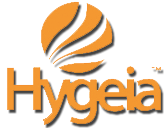
A Day-by-Day Guide for the Conquering the First Week
Newborn cuddles and breastfeeding bliss – that’s the dream, right? The breastfeeding first week sets the stage for your journey, and it can feel overwhelming. But don’t worry, mama, we’ve got your back! This guide will break down each day, offering tips and tricks for those precious early feedings.
Day 1 & 2: Colostrum Power!
Capture the Golden Hour: Your baby is going to be ready to eat upon arrival so take advantage! That first hour outside the womb is the perfect time to let baby’s natural instincts take over and find a perfect latch. Can’t take advantage of the “golden hour”? No worries. Just try to feed your baby as soon as possible.
Focus on Colostrum: In the first few days after birth, your body produces colostrum, a thick, yellowish liquid often called “liquid gold.” It may seem like a small amount, but it’s packed with antibodies to jumpstart your baby’s immune system. This “first milk” is perfectly designed for your newborn’s tiny tummy, promoting healthy gut development and even acting as a natural laxative. Learn more about colostrum in this post.
Frequent Skin-to-Skin Contact: Focus on skin-to-skin contact during these early feedings. This closeness not only helps regulate your baby’s temperature but also strengthens the emotional bond between you and your little one.
Feeding Cues: Your newborn’s feeding cues can be subtle at first, but look for signs like rooting, sucking motions, or fussiness. Aim for frequent, on-demand feedings, allowing your baby to determine how much milk they need. This frequent suckling stimulates your body to produce more milk, a process known as supply and demand.
Day 3 & 4: Latching Like a Pro
Mastering the Latch: Your nurses or the hospital Lactation Consultant may have helped you with latching initially, but you’ll want to focus on properly latching yourself. Your baby’s mouth should be wide open, with their chin and lower lip flanged out. Their tongue should be positioned over a large portion of your nipple and most of the areola.
Transitioning to milk: You will soon notice your milk begin to “come in,” which can feel full or tingly in your breasts. This is a good sign! Your body will produce a lot more milk than it did colostrum, so don’t be surprised. If you experience any pain or discomfort during feeding, don’t hesitate to seek help from a lactation consultant (IBCLC).
First outpatient appointment: You will likely have your first outpatient appointment scheduled before you even leave the hospital. Your doctor will check in on things like feedings and diaper changes, as well as baby’s measurements. This is the perfect time to address your questions and concerns.
Day 5 & 6: Finding Your Rhythm:
Feeding Routine: You’ve likely developed some type of feeding routine, but keep in mind that newborns still have small stomachs and need to eat frequently. Be prepared for 8-12 feedings or more in a 24-hour period.
Finding a Rhythm: Your feeding routine may be demanding but your body will be adjusting to its feeding duties. Your nipples should feel some relief from any initial tenderness and you should also be gaining confidence in latching. This should give you the opportunity to experiment with new feeding positions.
Hello Hormones: It’s quite possible that you’ll feel everything from sadness and overwhelm to joy in a matter of moments. It’s normal, thanks to hormones; however, postpartum depression and postpartum anxiety are also a common concern. Familiarize yourself with the signs of both and don’t be scared or ashamed to take it to your OB, MD or Lactation Consultant for the support you need.
Day 7: 1 Week!
Celebrate Your Success: You’ve conquered the first week of breastfeeding! Hopefully you’ve learned your baby’s feeding cues, mastered the latch, and established a breastfeeding routine, but if not don’t be discouraged. It’ll come soon.
Supportive Network: Having a strong support system can make all the difference. Consider connecting with a lactation consultant (IBCLC) or joining a breastfeeding support group. These professionals can offer valuable guidance on troubleshooting any challenges you may face.
Additional Support: Hygeia is also here for you! We offer a hospital-grade strength breast pump designed to mimic a baby’s natural suckling pattern for efficient milk expression.
Remember, mama, you are doing an amazing job! Breastfeeding is a beautiful and rewarding experience. By following these tips, seeking support when needed, and utilizing the right tools, you’ll be well on your way to a successful breastfeeding journey.
